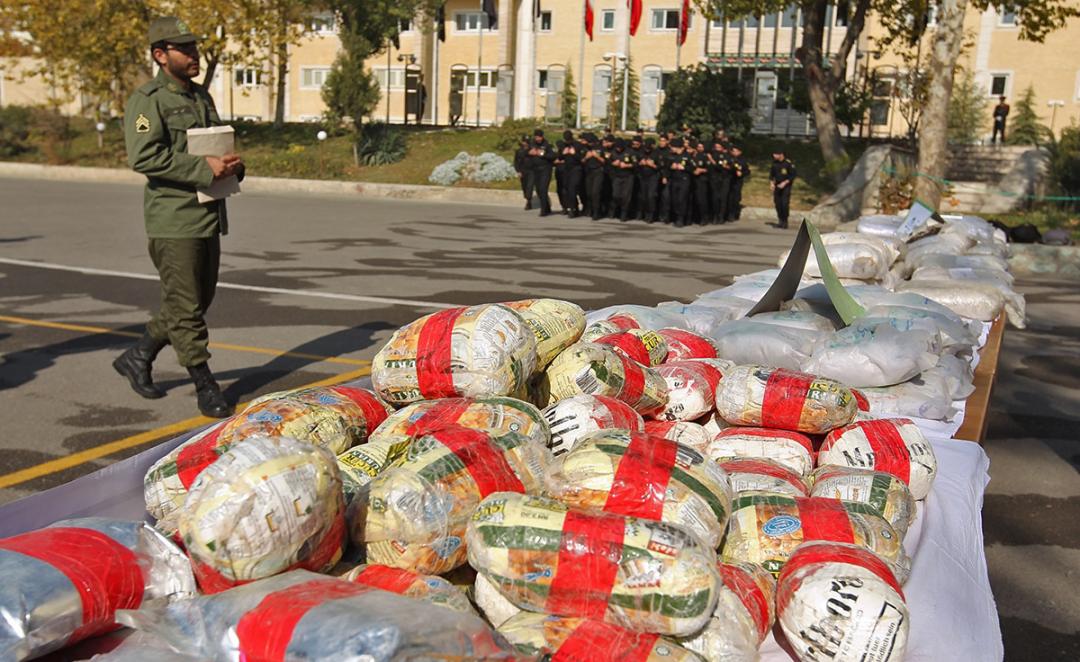The biggest crisis in Iran since the 1980-1988 Iraqi-imposed war is drug trafficking and abuse, says Parviz Afshar, deputy head of the Iranian Drug Control Headquarters.
Iran has been struggling with drug abuse for decades. Lately, the crisis has taken on a “national security” dimension, according to the narcotics control authorities, indicating that the fight against addictive substances has entered a new, more dangerous and complicated phase, reports an article in the Persian weekly Tejarat-e- Farda, a sister publication of the Financial Tribune.
Iran has one of the highest rates of opiate addictions in the world. This has been blamed partly on its geographical location as a popular trafficking route for organized crime moving drugs from Afghanistan, the world’s top opium producer, to Europe and beyond.
Achieving stable sobriety depends on how far a nation is successful in checking drug abuse and rehabilitating addicts. Sustained abstinence is a prerequisite for sobriety. Globally, a recovering addict achieves early sobriety by staying clean of drugs for 1–11 months, sustained sobriety by staying clean for 1–5 years, and stable sobriety by staying clean for 5 years or more.
Afshar, who is the new spokesman for the IDCH, says: “The rate of stable sobriety in the country stands at around 15-20% at best.” The same rate is 20-25% globally, and reaches 40% in ideal circumstances.
There is no detailed and transparent account of drug abuse in the country. Experts say the figure of 1.5-2 million given by the IDCH is conservative and the number of drug addicts is closer to 3.7 million.
One of the main reasons cited by experts for the lingering problem is the domestic economic challenges. Inflation, stagnation and unemployment, all work hand in hand to aggravate the problem, although there is an improvement in some economic indicators.
“If the youth have a happy, and satisfactory life they will engage less in risky behavior,” says Bijan Safavi, economic analyst and university instructor. Employment goes a long way in preventing social ills, including substance addiction.
Many believe that instead of wasting humongous amounts of money on fighting drugs, the government could do better to allocate funds for correcting the existing infrastructural deficiencies that have given rise to the dangerous scourge in the first place.
Providing the platform for healthy entertainment, creating the grounds for harnessing the maximum potential in every individual, promoting appropriate education and a healthy culture, are among the steps that can and should be takenm social scientists and experts have often proposed.
Lack of Monitoring
As stated by Ali Hashemi, secretary general of the IDCH in 2005, the number of industrial drug abusers then was below 10,000 (less than 1% of the entire population), but the figure jumped to 330,000 at the end of the previous administration’s tenure as substantiated by official data in 2013.
Another problem is the loophole in information available at the IDCH and lack of adequate scientific research that is essential to effectively tackle drug abuse.
Hashemi, who chairs a committee in the Expediency Council tasked with combating narcotics, lamented that even after decades, there is no proficient monitoring and data analysis center at the IDCH, which was established 27 years ago.
“Why do we not have a center that screens every little regional, national, and provincial shift in trends so that we don’t wake up one day and see that the 10,000 drug abusers have multiplied to 400,000,” he asked.
Role of NGOs
In most countries, NGOs play a crucial role in issues such as helping fight narcotics, preserving the environment, saving wildlife, etc.
“In Iran, NGOs are facing numerous challenges that adversely affect their performance,” says Saeed Sefatian, a prominent official and head of the working group on drug demand reduction at the influential Expediency Council.
“Distancing from the initial goals, failing to recruit active members, lack of adequate and accurate information and familiarity with such organizations among the people, weak professional performance, red tape and a bloated bureaucracy, inadequate coordination among the decision-making bodies, as well as finances, are among the hurdles,” he said.
To make matters worse, the treatment addicts normally get from authorities in no way encourages them to volunteer for rehabilitation and recovery. The community’s attitude towards recovering addicts is also unpalatable.
“A society must create the conditions for an abuser to be encouraged to quit,” says Majid Rezazadeh, deputy head for prevention at the State Welfare Organization. “If they know things are going to get worse once they’re identified, no drug abuser will decide to get clean.”
According to the Islamic Republic Constitution, the Labor Ministry is obliged to allot 5% of its employment capacity to vulnerable groups, recovering addicts in particular.
Facts & Figures
Facts and figures released by news outlets suggest that addiction has worsened over the years. It is said that 80% of Iranian prisoners are in detention for drug-related crimes. Every year, 3,000 people are killed by overdose, and there are 120,000 homeless addicts across the state.
More than 4,000 law enforcement personnel have lost their lives in the seemingly unending fight against illegal drugs.
A high-purity form of crystalline methamphetamine seems to be an increasingly abused substance across all social classes. The number of females, including well-educated and affluent women, using substances is also rising. The latest official figures suggest that their number has more than doubled in the past 10 years.
Women now make up 9.3% of Iranians affected. More than 50% of addicted women used drugs for the first time between the ages of 15 and 19.


